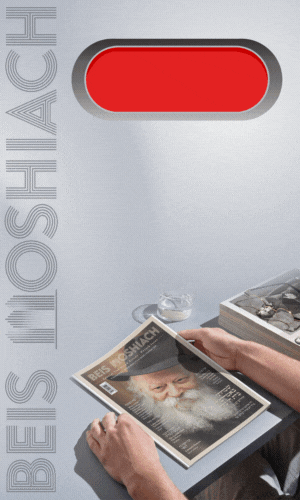Jewish Past and Present in Moldova
Whenever we find ourselves someplace my husband regards as particularly ugly or unappealing, Oggi declares, “I’d rather live in Kishinev.” A lot of people prefer not to live in the capital of Moldova, Europe’s poorest city, now known as Chișinău • Full Article
thejewishweek.com/Hilary Danailova
Whenever we find ourselves someplace my husband regards as particularly ugly or unappealing, Oggi declares, “I’d rather live in Kishinev.”
A lot of people prefer not to live in the capital of Moldova, Europe’s poorest city, now known as Chișinău. These include a large number of Moldovan Jews, who — if they survived a series of brutal, infamous pogroms or the Second World War — have opted to emigrate to Israel or the West.
(Among them, intriguingly, is Ilan Shor, reportedly one of Israel’s wealthiest young financiers and a highly controversial figure who played a central role in a recent scandal involving Moldova’s largest bank. The Tel Aviv-born Shor grew up in what was then Kishinev and — even more intriguingly — is married to Jasmin, a Jewish, Dagestan-born Russian pop singer.)
But while Shor may have deserted Kishinev for sunnier shores — or any shore at all, given that Moldova is landlocked — the green, shady capital offers unexpected urban pleasures amid echoes of a mournful Jewish history for the few visitors intrepid (or lost) enough to stumble here.
Kishinev, the Slavic name, dates to Moldova’s long era as a Soviet Republic wedged between Romania and Ukraine in Europe’s far east. The name change reflects a Romanian-speaking majority; Chișinău, a city of nearly 500,000, still feels very Soviet in ways both bleak and entertaining, but street names starting with “Strada” and the bouncy Oriental pop emanating from bars are evidence of a colorfully hybrid culture.
Like a lot of East European cities, Chișinău consists of a compact, pleasant urban core surrounded by seemingly endless hulking, crumbling Socialist blocs — the very worst of postwar architecture, but on a vast, imperial scale. Tragically, much of the newer construction offers stiff competition in the ugliness category. Exhibit A: the crop of humongous new shopping malls (one is called Malldova) whose shapeless glass façades and garish hues — royal blue, garnet red — represent a fascinating nadir for post-communist ambition.
Fascinating, yes. You won’t see things like this in Paris. But if cities like Chișinău teach us travelers anything, it’s that the unexpectedly not-so-beautiful can be as entertaining as the predictably beautiful — and that simple pleasures still go a long way in places where money is tight.
These pleasures include two grand, lovely parks at the city’s center, a logical sightseeing starting point for their combination of lively human scenery, historical monuments and Old World ambiance. Here amid the fertile plain of the River Bic — a tributary of the Dnieper — lush, verdant central Chișinău is split at the core by Stefan The Great Boulevard and the parks on either side, Stefan the Great Central Park and the Public Garden. (Notice a theme here? Stefan, whose cross-wielding likeness greets visitors at his park’s entrance and serves as a city icon, was a 15th-century prince of Moldova who defended his perpetually beleaguered nation against a series of external aggressors.)
Spread out under a canopy of tall, shady trees, these parks showcase a cross-section of contemporary Moldovan life along with artifacts from its long history. Century-old Italianate fountains spout and burble amid flower-filled plazas, where families stroll and packs of young people gather to socialize over cheap beer in pop-up cafés.
All of this would have seemed unimaginable just 75 years ago, when the city was devastated by World War II and a strong earthquake. Those two events destroyed much of Kishinev’s historic core, leaving but a few relics for modern-day tourists. One that may interest readers and Russophiles is the Pushkin House Museum, a quaint, unassuming white cottage with a thatched roof and original furnishings, where the poet lived in the early 1800s.
More evidence of that bygone world is on view at a trio of museums that surround the central parks. They are the National Art Museum, National Ethnographic Museum and National History Museum, an entertaining hodgepodge of golden artifacts, dusty furnishings, second-rate paintings and first-rate folklore.
There’s even a majestic Arc de Triomphe at the entrance to the Public Garden, near the imposing Orthodox cathedral that is another city symbol. It lies just a few blocks west of the pretty white synagogue, now operated as a community center by Chabad Lubavitch, that stands as an improbable beacon to Moldovan Jewish life here.
Two horrific pogroms, in 1903 and 1905, are recalled as the defining events for a once-vibrant Jewish community that flourished in 19th-century Kishinev. What was left of that population was all but vanquished by World War II, the earthquake and postwar emigration. A weedy Jewish cemetery, now an attraction for visitors, is evidence of that mournful past — but a modern community is slowly rebuilding.
The proof? Type “Kishinev.org” into your browser. The site directs you to the webpage “Jewish Community of Kishinev and Moldova, Chabad Lubavitch,” where pictures attest to a fragile but real revival of Jewish life in this least likely of places. Like nearly everything in Chișinău, it’s a welcome sight you didn’t anticipate.
125
Join ChabadInfo's News Roundup and alerts for the HOTTEST Chabad news and updates!










































